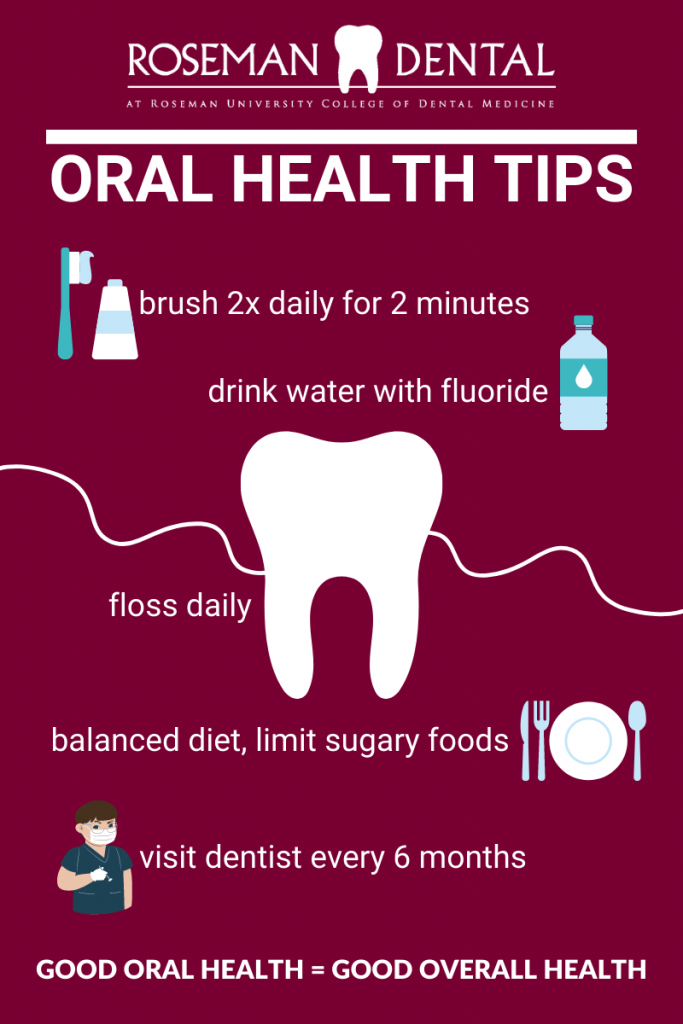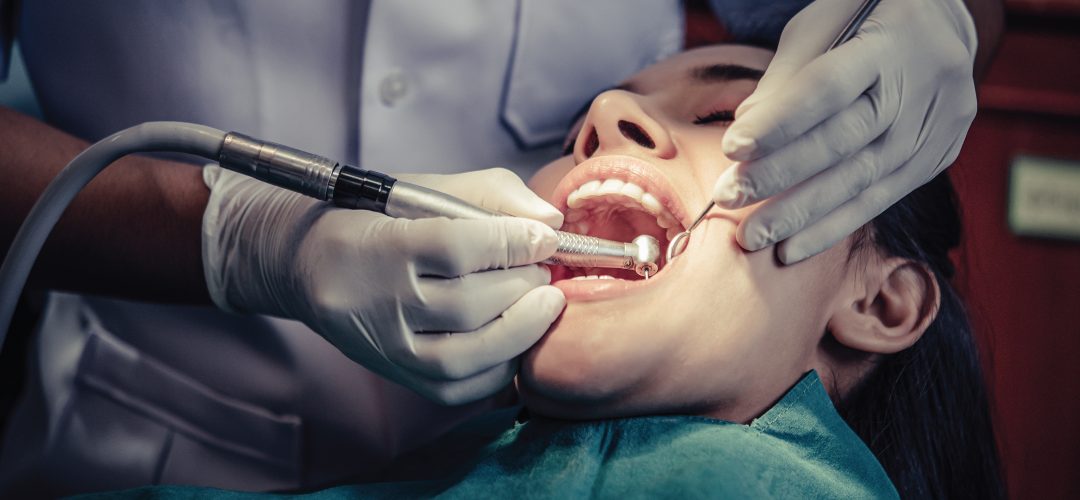
by Roseman Dental | Jan 15, 2021 | Dental Clinic Blog, Oral Health, Roseman Dental - NV, Roseman Dental - UT
News flash – oral health is so much more than just your teeth! Your mouth is the window to the health of your body. Oral health includes not only the health of your teeth, but also your gums, bones, ligaments, muscles, glands, and nerves. Your ability to speak, smile, smell, taste, touch, chew, swallow, and make facial expressions to show feelings and emotions is impacted negatively or positively based on the condition of your oral health. Having good oral health gives an individual confidence in their self-image and sense of well-being.
Mouth and Body Connection
If your mouth is not healthy you could face far more serious consequences than just a simple toothache; however, the mouth is a fascinating thing. It can warn you of the start of more serious health conditions. It can show signs of nutritional deficiencies, general infection, and the onset of systemic diseases – diseases that can affect other parts of the body or the entire body – such as diabetes and AIDS. Diabetes complications can occur when you have inflammation of the gum tissue and periodontal disease (a disease more common in diabetic patients). These, in combination, can make it harder to control your blood sugar and make your diabetes symptoms worse.
Gum disease, an indicator of poor oral health and a chronic inflammatory condition, is linked to illnesses such as:
- Heart Disease – A disease that is most known as coronary artery disease or cardiovascular disease. This disease causes decreased blood flow to the heart which can cause a heart attack.
- Respiratory Disease – A disease that affects the lungs and other parts of the respiratory system. Respiratory diseases may be caused by infection, smoking tobacco, or breathing in secondhand tobacco smoke, radon, asbestos, or other forms of air pollution. Respiratory diseases include asthma, chronic obstructive pulmonary disease (COPD), pulmonary fibrosis, pneumonia, and lung cancer. Also called lung disorder and pulmonary disease.
- Osteoporosis – A bone disease that occurs when the body loses too much bone, makes too little bone, or both. As a result, bones become weak and may break from a fall or, in serious cases, from sneezing or minor bumps.
- Rheumatoid Arthritis – An autoimmune and inflammatory disease where your immune system attacks healthy cells in your body by mistake, causing inflammation (painful swelling) in the affected parts of the body.
Good Oral Health = Good Overall Health
It is important to establish good hygiene habits so that your oral health does not negatively impact your overall health. There are a variety of steps that can be taken to make sure that your oral health is in tiptop shape.

- Brushing your teeth twice a day & after every meal for two minutes with fluoride toothpaste
- Drinking water with fluoride
- Flossing daily
- Eating a balanced diet
- Limiting sweet snacks between meals
- Staying away from sugary foods and drinks and try not to sip or eat on them all day. If you want a sugary food or drink, have one at mealtimes.
- Visiting your dentist at least every six months for cleanings, prevention and treatment of cavities
Good Oral Health Saves Lives
Taking preventative steps and teaching your family good oral hygiene routines now can not only save their oral health, but also save their lives. With the new year, set a new goal to make your oral health a priority. Last year caused many of us to get behind on our oral health due to dental offices being closed. Dental offices are back up and running so don’t delay, schedule your appointment and make sure your oral health is in tiptop shape.
Contact Roseman Dental to schedule your dental exam.
Nevada Location
Utah Location

by Roseman Dental | Jan 14, 2021 | Dental Clinic Blog, Roseman Dental - NV
Not everyone is born with straight teeth. Many people have crooked teeth that can cause many issues for their oral health which then affects their overall health. Orthodontic treatment works to align teeth to ensure proper function of teeth and create healthy smiles.
Benefits
Straightening your teeth is more than aesthetic, it improves your overall oral health. Improperly aligned teeth are harder to clean and can cause tooth decay and many other painful dental disorders – leading to extensive and expensive dental procedures. In addition, misaligned teeth can make it harder to chew – leading to headaches, shoulder and back pain, and even temporomandibular joint (TMJ) disorders.
Orthodontic treatment aligns your teeth to form a better bite decreasing the risk of future, and potentially costly dental problems.
How Does Orthodontic Treatment Work?
Orthodontic treatment involves a variety of appliances used to create changes in jaw bones, facial bones, and soft tissue while teeth are moved into their new positions. During an orthodontic consultation, you will meet with an orthodontist to have a thorough examination of your teeth and mouth. They review your dental records – x-rays, photos, and models of your teeth. From here your orthodontist will advise you on which approach is right for you and work to develop a custom treatment plan.
Orthodontic Treatment Options
Orthodontic treatment is for everyone and works to correct teeth and jaws that are positioned improperly. There are a variety of fixed and removeable appliances that an orthodontist may recommend for treatment. Depending on how severe your situation, your orthodontist may require traditional metal, clear, or Invisalign® braces for your treatment, as well as additional removable appliances.
- Metal Braces: Made from a high-grade stainless steel, these braces provide the highest-quality treatment. Metal braces are the most common type of braces. They consist of bands, wires, and brackets that are adhered to your teeth. Historically they’ve been considered unattractive, but now they are smaller, more comfortable and attractive.
- Ceramic (clear) Braces: This form of braces includes bands, wires, and brackets. Although like metal, ceramic braces are made from a clear, ceramic material – allowing a more discreet option.
- Invisalign®: Unlike metal and ceramic braces, Invisalign® is a removable aligner. Rather than wires and brackets, Invisalign® utilizes a clear material that fits over your teeth. Although this is the most discreet option, it is only available to those with specific orthodontic bite problems.
How Do I Know if I Need Braces?
Several problems could lead to orthodontic treatment. An overbite, underbite, crossbite, or open bite may be a culprit to needing treatment. In addition, a misplaced midline, spacing, or crowding could also be cause for treatment.
- Overbite – your upper front teeth stick out over your lower teeth
- Underbite – your lower teeth are too far forward, and your upper teeth are too far back
- Crossbite – when your mouth is closed, the upper teeth sit behind the lower teeth
- Open Bite – a vertical gap exists between your front lower and upper teeth when biting down
- Misplaced Midline – center of your upper and lower teeth doesn’t line up
- Spacing – random gaps or spaces between teeth causing your teeth to not completely fill up your mouth
- Crowding – when the dental ridge in your mouth doesn’t have enough room for all your teeth
With the use of diagnostic tools such as clinical exams, plastic models of your teeth, and x-rays an orthodontist will be able to correctly determine which treatment is right for you.
How Long Will I Need to Wear Braces?
Treatment time varies depending on each patient’s specific diagnosis and treatment plan. In general, most patient’s treatment times range from 12 to 24 months. For those with problems that are harder to correct or adults, treatment may take up to three years. If problems are less severe or you’re a good candidate for clear aligners, such as Invisalign®, treatment may take as little as 6 to 12 months.
How Much Does Orthodontic Treatment Cost?
Cost of treatment is dependent on several variables. Types of braces, age of patient, type of orthodontic issue being corrected, and length of treatment are just some of the variables that could contribute to your final cost of treatment. For instance, traditional metal braces tend to be less expensive than clear braces or aligners. While cost is dependent on various factors, the average cost of orthodontic treatment for children can vary between $2,000-7,000. For adult braces or aligners, the cost can range anywhere from $3,000-8,000. These are estimated costs. The exact cost will depend on your needs, the factors mentioned above, and any dental insurance you may have to cover orthodontic treatment.
When teeth are properly aligned it’s easier to practice good oral hygiene such as brushing and flossing. In addition, orthodontic treatment will help give you the freedom to smile without holding back! If you’re experiencing any of the above problems, schedule a free orthodontic screening and consultation (Nevada location only) with Roseman Dental & Orthodontics. We’re dedicated to increasing your confidence and helping you maintain good oral health.
Nevada Location

by Roseman Dental | Jan 7, 2021 | Dental Clinic Blog, Oral Health, Roseman Dental - NV, Roseman Dental - UT
A New Year is not only a fresh start, but a great time to make positive changes in our lives. One of the most common new year resolutions is to have a healthier, everyday lifestyle. Whether it’s eating better, being more physically active, or getting your wellness in order – looking out for your overall health is important. This is especially true when it comes to your oral health.
Your oral health is directly tied to your overall health and your smile is a reflection of good oral health. There are several dental procedures that can help you gain a fresh smile in the new year.
Routine Dental Check-ups
Twice a year (every six months) dental appointments are essential to your oral health. These routine visits not only prevent oral disease but allow for early detection of any problems that would otherwise include more extensive (and expensive) treatments to fix. Staying up to date on your semi-annual dental visits will keep you on track with any treatments you may need and save you money in the long run.
Dental Implants
If you’re missing teeth, dental implants are great way to fill the gaps and get that fresh smile you’ve been looking for. Dental implants are artificial roots that are placed in your jawbone and bond with your natural bone. They are the strongest devices available to support new teeth. In addition, they allow new teeth to look, feel, and function naturally – giving you the confidence to smile again!
Root Canal
A root canal is often thought of as a painful procedure, but it’s actually relatively painless and extremely effective. This procedure is designed to eliminate bacteria from the infected root canal and save the natural tooth. A root canal is very similar to a routine filling and can usually be completed in one or two appointments. Therefore, you’ll be back to smiling, biting, and chewing in no time.
Orthodontic Treatment
Orthodontic treatments are for everyone and work to correct teeth and jaws that are positioned improperly. Modern braces come in a variety forms – traditional metal, clear, and Invisalign®. Each form helps to straighten teeth which prevents additional health problems and boosts self-confidence. When teeth are properly aligned it’s easier to practice good oral hygiene such as brushing and flossing. In addition, orthodontic treatment will help give you the freedom to smile without holding back!
Your Smile Matters
Your smile conveys so much to yourself and the world. Studies show that the mere act of smiling makes people happy. Now is the time to spread happiness with a fresh smile. Let 2021 be the year you’re proud to share your smile with the world! Contact Roseman Dental to schedule an appointment for your routine cleaning or ask about our other services that may benefit or improve your dental health.
Utah Location
Nevada Location

by Roseman Dental | Jan 5, 2021 | Dental Clinic Blog, Roseman Dental - NV, Roseman Dental - UT
Dental fillings are one of the most common dental procedures performed by dentists today and are used to treat cavities and fix damage caused by decay. According to the American Dental Association, about 175 million filling operations are performed in the United States every year. That is a lot of fillings, but what exactly is a filling?
Types of Fillings
There are 5 types of fillings.
- Amalgam Filling – This type of filling, also known as a silver filling, has been used for over 150 years. Amalgam is defined as a mixture or blend. In the dental world it is a mixture of metals – about 50 percent mercury with the remaining 50 percent being comprised of tin, copper, silver, or zinc. Amalgam fillings are the least expensive, very strong, and last a long time; however, it is silver in color so it’s not as visually appealing when opening your mouth.
- Composite Filling – This type of filling is ideal if you want your filling to look natural and match your other teeth. Composite fillings can be closely matched to the color of your existing teeth and are very desirable if you need a filling on your front teeth or the visible parts of your teeth. Although a composite filling is more aesthetically pleasing, they are not as durable as amalgam fillings. That being said, a typical composite filling can last five years, sometimes longer, if you practice good oral hygiene.
- Metal – This type of filling, also known as a gold filling, is extremely durable and can last upwards of 10 to 15 years; however, the cost of a metal filling can be 10 times higher than the cost of a silver amalgam filling. The look of this filling is also not as aesthetically pleasing as a composite filling.
- Ceramic – This type of filling is typically made from porcelain and is more resistant to staining than a composite filling. It lasts more than 15 years, but can cost as much as a gold metal filling.
- Glass Ionomer Filling – This type of filling is commonly used for fillings that are below the gum line and fillings on young children. It is made from acrylic and a special type of glass material. This filling releases fluoride into the mouth which assists in preventing more decay and helps to protect the tooth. This type of filling is comparable to the cost of a composite filling.
The type of filling you receive is based on factors such as location and extent of the decay, cost of the filling material, insurance coverage, and of course what your dentist recommends.
How to Prevent Cavities
Cavities are permanently damaged areas in the hard surface of your teeth that develop into tiny openings or holes. If cavities are not treated, they can cause sensitivity, pain, infections, and can even cause you to lose your teeth. Although cavities are treated by fillings, there are things you can do to prevent cavities from occurring and avoid needing a filling . . . or two or three.
- Brush your teeth twice a day for two minutes with fluoride toothpaste.
- Drink water with fluoride.
- Floss daily.
- Eat a balanced diet.
- Limit sweet snacks between meals.
- Stay away from sugary foods and drinks and try not to sip or eat on them all day. If you want a sugary food or drink, have one at mealtimes.
- Visit your dentist regularly.
If you’re experiencing pain or it’s been a while since you’ve seen a dentist, Roseman Dental can help. Contact us today.
Utah Location
Nevada Location





